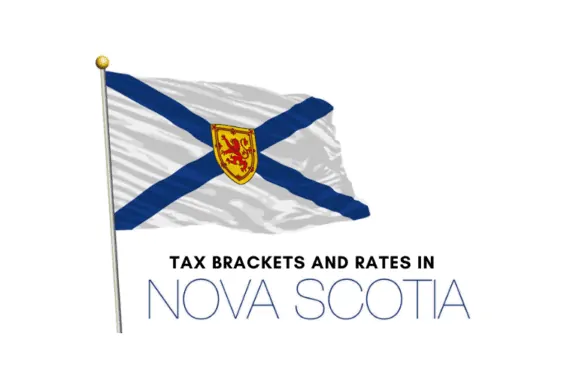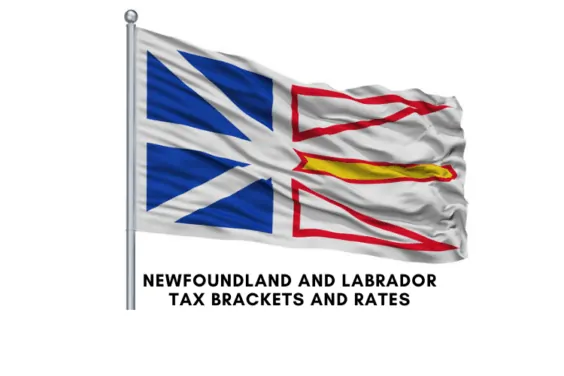The Covid-19 pandemic ravaged the world in 2020 and 2021 leaving countries reeling from health and economic damages. And, the increased spending by governments to minimize its impact has resulted in historical deficits that will need to be accounted for at some point.
This has led various experts to speculate that we should expect some significant tax changes in Canada this year and in the near future.
While we can’t say for sure whether capital gains will be restricted or the GST will increase, below we have covered the tax rate changes in Canada we know about so far for 2022.
Tax Changes in 2022
For the 2021 tax year and tax season, the deadline to file tax returns for most filers is May 2, 2022.
Federal Tax Rate Brackets in 2022
The federal income tax brackets increased in 2022 based on an indexation rate of 2.4%
- Up to $50,197: 15%
- $50,197.01 to $100,392: 20.50%
- $100,392.01 to $155,625: 26%
- $155,625.01 to $221,708: 29%
- $221,708+: 33%
The basic personal amount is up to $14,398. If you are in a high income tax bracket and earn $221,708 or more, your basic personal amount is $12,719.
Employment Insurance Contributions in 2022
The maximum annual insurable earning in 2022 is $60,300, increasing from the threshold of $56,300 in 2021.
The rate for calculating the premium you pay remains at 1.58%.
The maximum amount of EI Premium an employee pays this year is $952.74, and for employers, it is $1,333.84.
In Quebec, the maximum EI premium for employees is $723.60 and for employers, it is $1,013.04.
Canada Pension Plan Contributions in 2022
The CPP contribution rate for workers increases to 5.45% in 2021, or a total of 10.90% when combined with the employer rate.
The maximum pensionable earnings is $64,900, an increase of $3,300 from the $61,600 in 2021. The basic exemption amount remains at $3,500 in 2022.
You can expect to pay up to $3,499.80 in CPP contributions this year. If you are self-employed, your maximum contribution is doubled at up to $6,999.60.
Canada Child Benefits in 2022
The Canada Child Benefit (CCB) amount for the first half of 2022 is:
- Maximum of $6,833/child/year under age 6 and up to $5,765 per child from age 6-17.
For the second half of 2022, it is:
- Maximum of $6,997/child/year under age 6 and up to $5,903 for those aged 6-17.
CRB Taxes in 2022
The Canada Recovery Benefit (CRB), Canada Recovery Caregiving Benefit (CRCB), and Canada Recovery Sickness Benefit (CRSB) you received in the 2021 tax year are taxable.
You will receive a T4A from the CRA and will need to record the payments when you file your tax return.
While these three benefits have a 10% tax withheld at the source, your overall taxable income bracket could mean you owe additional taxes.
GST/HST Benefits in 2022
The Federal Sales Tax (GST) paid by eligible individuals is refunded as follows:
- Adult: $306 maximum
- Child: $161 maximum
- Single supplement: $161
GST payments are clawed back when your family’s net income exceeds $39,826.
Provincial Tax Rates and Brackets in 2021
The income tax brackets for most provinces increase this year based on the respective provincial or federal consumer price index.
Some provinces have surtaxes in addition to the base tax rates*.
| Province/Territory | Income Tax Bracket and rates 2021 |
| Alberta | Up to $131,220: 10%; $131,220.01 to $157,464: 12%; $157,464.01 to $209,952: 13%; $209,952.01 to $314,928: 14%; $314,928.01 and over: 15% |
| British Columbia | Up to $42,184: 5.06%; $42,184.01 to $84,369: 7.70%; $84,369.01 to $96,866: 10.50%; $96,866.01 to $117,623: 12.29%; $117,623.01 to $159,483: 14.70%; $159,483.01 to $222,420: 16.80%; $222,420.01 and over: 20.50% |
| Manitoba | Up to $33,723: 10.80%; $33,723.01 to $72,885: 12.75%; $72,885.01 and over: 17.40% |
| New Brunswick | Up to $43,835: 9.68%; $43,835.01 to $87,671: 14.82%; $87,671.01 to $142,534: 16.52%; $142,534.01 to $162,383: 17.84%; $162,383.01 and over: 20.30% |
| Newfoundland and Labrador | Up to $38,081: 8.70%; $38,081.01 to $76,161: 14.50%; $76,161.01 to $135,973: 15.80%; $135,973.01 to $190,363: 17.30%; $190,363.01 and over: 18.30% |
| Nova Scotia | Up to $29,590: 8.79%; $29,590.01 to $59,180: 14.95%; $59,180.01 to $93,000: 16.67%; $93,000.01 to $150,000: 17.50%; $150,000 and over: 21% |
| Nunavut | Up to $46,740: 4%; $46,740.01 to $93,480: 7%; $93,480.01 to $151,978: 9%; $151,978.01 and over: 11.50% |
| Northwest Territories | Up to $44,396: 5.90%; $44,396.01 to $88,796: 8.60%; $88,796.01 to $144,362: 12.20%; $144,362.01 and over: 14.05% |
| Ontario* | Up to $45,142: 5.05%; $45,142.01 to $90,287: 9.15%; $90,287.01 to $150,000: 11.16%; $150,000.01 to $220,000: 12.16%; $220,000.01 and over: 13.16% |
| Prince Edward Island | Up to $31,984: 9.80%; $31,984.01 to $63,969: 13.80%; $63,969.01 and over: 16.70% |
| Quebec | Up to $45,105: 15%; $45,105.01 to $90,200: 20%; $90,200.01 to $109,755: 24%; $109,755.01 and over: 25.75% |
| Saskatchewan | Up to $45,677: 10.50%; $45,677.01 to $130,506: 12.50%; $130,506.01 and over: 14.50% |
| Yukon | Up to $49,020: 6.40%; $49,020.01 to $98,040: 9%; $98,040.01 to $151,978: 10.90%; $151,978.01 to $500,000: 12.80%; $500,000.01 and over: 15% |
RRSP and TFSA Contribution Limits
The annual TFSA contribution limit in 2022 is $6,000, the same as last year.
Individuals who have been eligible to contribute to a TFSA since its inception in 2009 now have a total contribution room of $81,500.
The maximum annual RRSP contribution limit is 18% of your income up to a maximum of $29,210.
Pension Amount Changes
The maximum monthly OAS amount is $626.49, and for GIS, it is $948.82.
OAS payments drop to zero when your income is $128,149 or higher. OAS clawback starts when your income exceeds $79,845.
The maximum monthly Canada Pension Plan (CPP) amount is $1,203.75.
How To File Your Taxes
You can use a free or paid online tax software to file your 2021 tax return.
Online NETFILE tax submissions via CRA-certified tax software are processed faster than paper returns and you can get your refund within 2 weeks.
Some of the best online tax preparation services in Canada include:
You can learn more about these tax platforms here.



